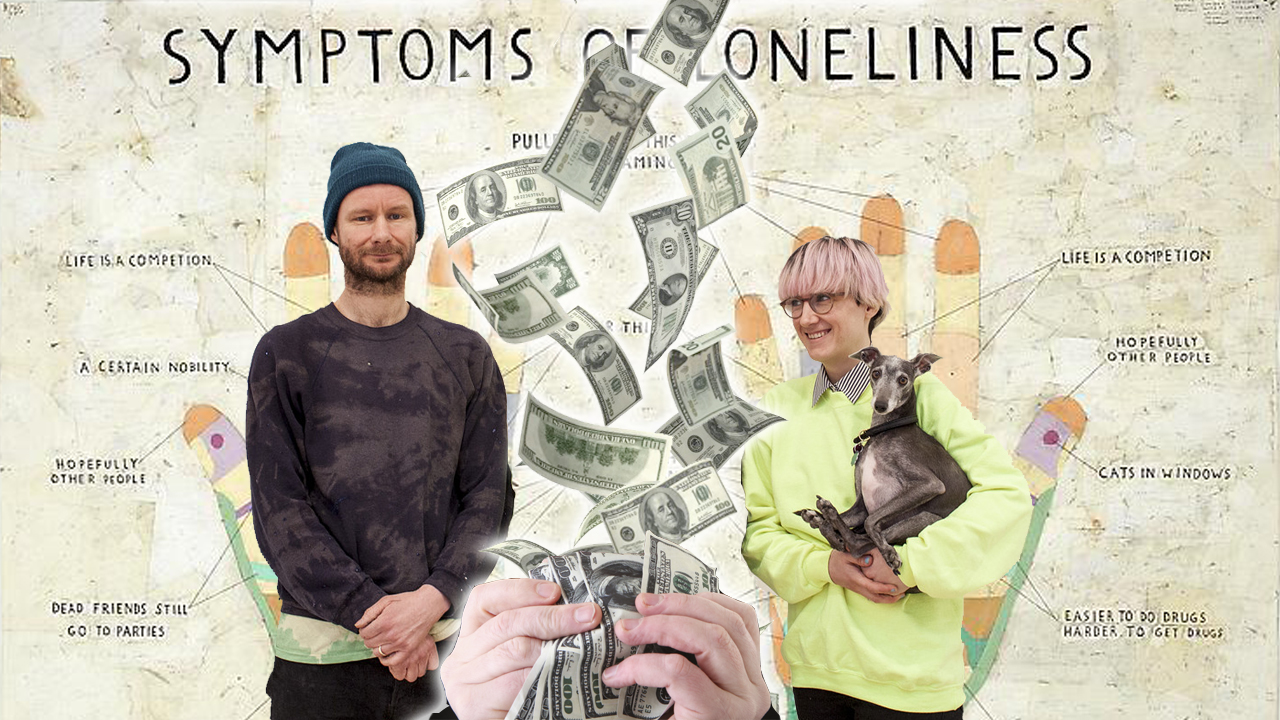“We thought it was up to ‘The Man,’ or whoever was in control of the art world,” artist Sarah Lannan tells to the Wall Street Journal, in an article misleadingly titled “An Art-World Love Story.” For years, Lannan and her husband Simon Evans have been making art together, art billed to Evans alone. Recently, they both decided to give her fair credit. Enter “The Man.”
Simon Evans is an artist who is, if not top tier, doing very well. His third solo show is currently up at the James Cohan Gallery in Chelsea. “His” work sells for $15,000 to $100,000 a piece. Evans and Lannan met eight years ago as he was coming up, and they’ve been inseparable ever since. Evans is open about the fact that they work on the art together, in a seamless collaboration. The artists even have nearly identical handwriting, which is important for a body of work heavily consisting of hand-written lists.
But following a recent confrontation at a dinner party when a fellow male artist publicly accused Evans of being a misogynist, Lannan decided she wanted to set the record straight. Evans agreed.
 Simon Evans, Everything I Have (2008)
Simon Evans, Everything I Have (2008)
And so, they’ve reached a strange and unbalanced compromise. They will continue their labor-intensive collaborative practice, but will start exhibiting work independently — under Evans’s vetted name and, separately, under Lannan’s, as a solo artist. Lacking Evans’ name recognition, it’s as if Lannan now finds herself just beginning as an artist, rather than being eight years into a successful career.
Enter Eben Shapiro, the man behind the Wall Street Journal’s alleged “Art-World Love Story” with its theatrical sub-head — “As Simon Evans’s star rises in the art world, his wife wants more credit.” Before the story even begins, it evokes a clash of egos and personal tensions, specifically regarding this unnamed wife, that with her suddenly wanting something. The article is selling this as an art world love story, but the reality might have a liberal bias. Discrimination, inequality and corruption tend to lean at free-market capitalism and permeate all facets of all markets, including, of course, the “art-world.” Evans and Lannan’s relationship seems fine.
“There is no way I was going to destroy this thing that Simon has. And neither one of us wants to lose our jobs,” Lannan said, as Evans serenaded, “The most important thing to me is Sarah’s soul.” Even their New York gallery director chimed in: “My understanding is they operate as one being.”
So, why can’t the creators of the work give it legitimate co-credit of authorship? Because Evans has built a brand, and you do not fuck with the brand.
 Simon Evans, Symptoms of Loneliness (2009)
Simon Evans, Symptoms of Loneliness (2009)
It’s a well-worn cliché. Benefactors of artists — de’ Medici, the Church, Wall Street, all the people with money and influence over what gets made, shown and sold — are businessmen, and businessmen understand art through the sensibility of business.
The collectors know Evans’s brand. They’ve acquired his work™ and probably fear that the brand may now fluctuate. It conflicts with the myth of a lone artist toiling away for them in revery. It confuses their investments with the possibility of a retroactive [co-]credit change. And, ultimately, it potentially lowers the work’s market value. It is not in their interest to involve Lannan, because, as per the market they themselves have established, women tend to sell for lower prices than men. The Wall Street Journal may not know much of art or love, but they definitely know capitalism. That’s the real love story here.

Sarah Lannan, Simon Evans. (Image: Kristine Larsen/WSJ)



